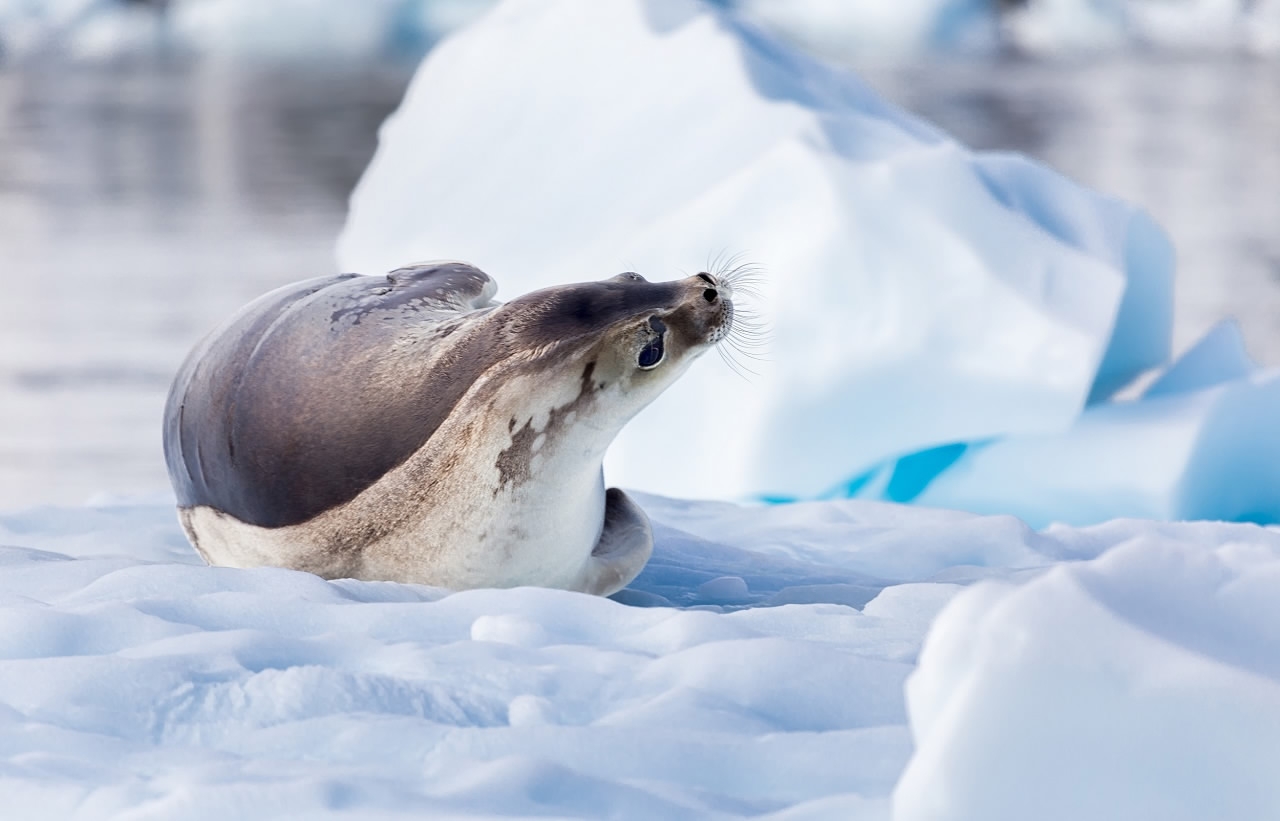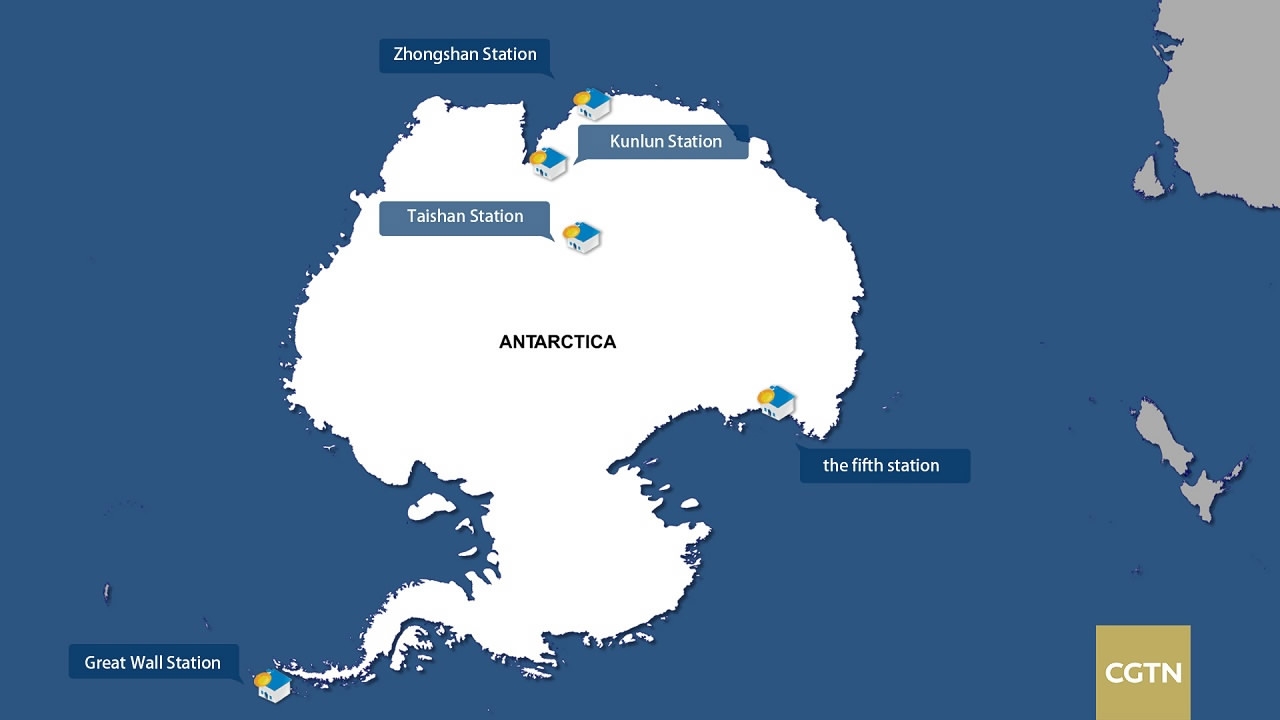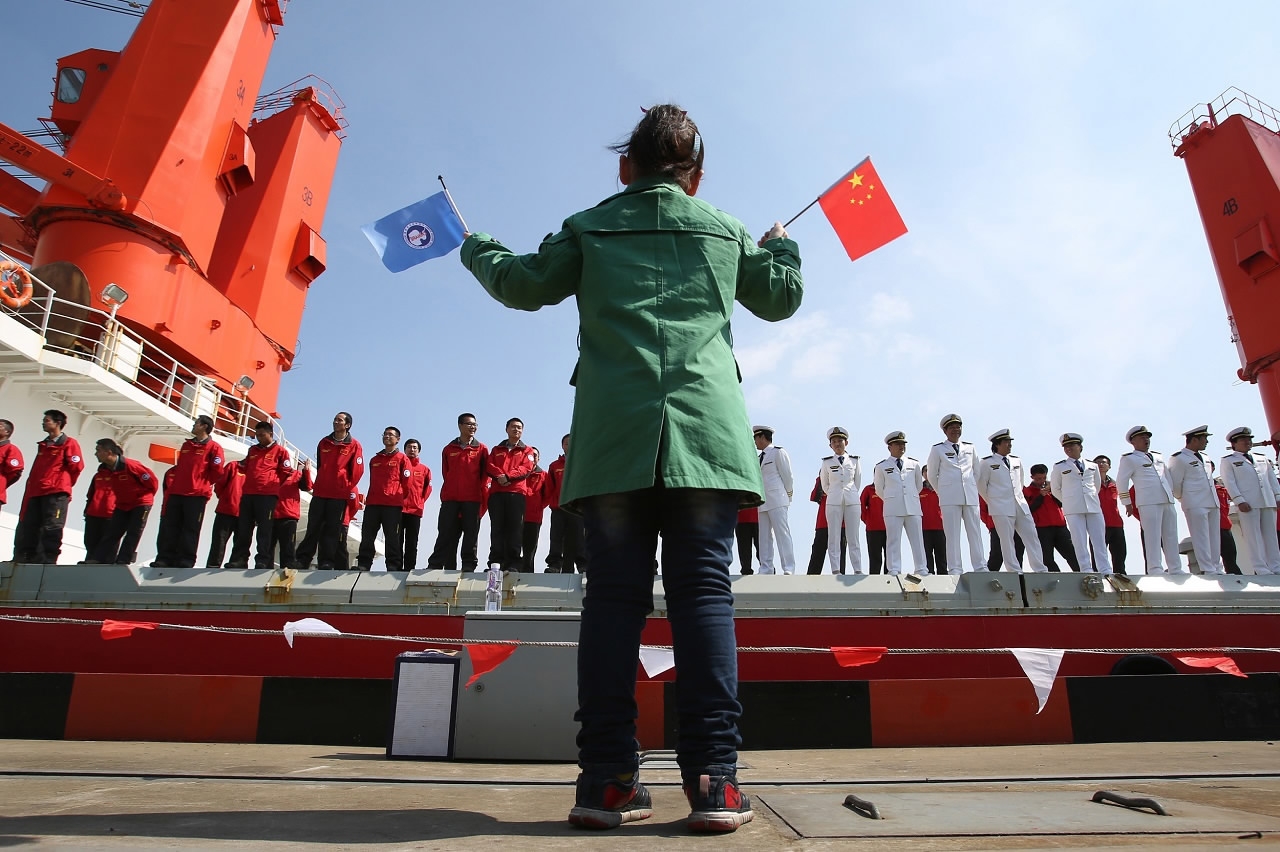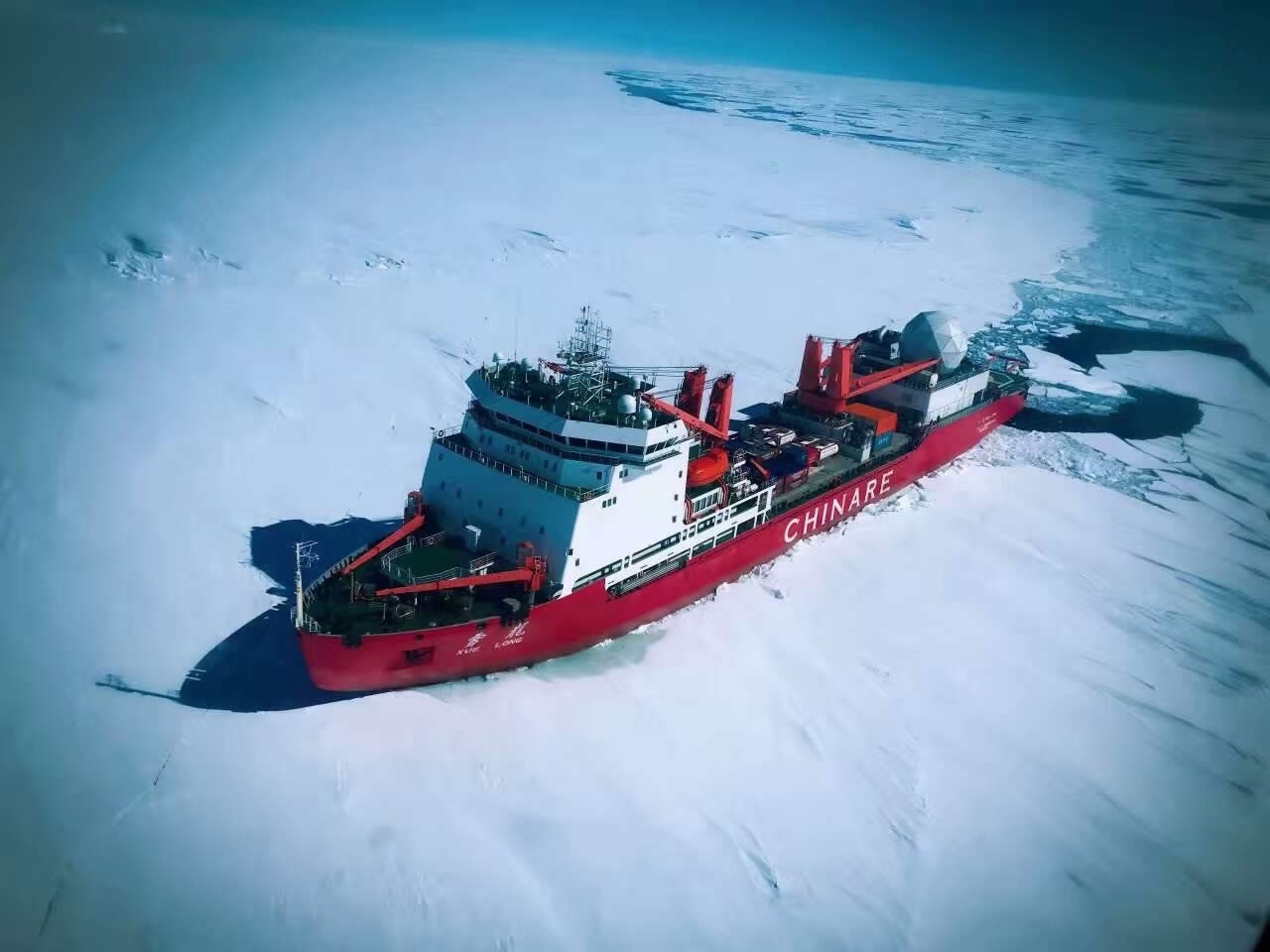Although it’s already been two months since she returned home, Dr. Zhang Qiao’s excitement of stepping on Antarctica for the first time remains fresh in her memory.
“We could sometimes see seals on the floating ice and whales coming out of the ocean while on the ship,” recalled Zhang, staff of the Second Institute of Oceanography at China's State Oceanic Administration (SOA).

Seal on a block of floating ice. /VCG Photo
As a member of the nation's 33rd Antarctic expedition team, Zhang took off from Shanghai on January 16, 2017, returning on April 11 after an 85-day trip. The expedition marked the end of the site selection process for China's fifth research base in the South Pole.
Antarctica occupies about 13.8 million square kilometers of land, almost one and a half times the size of China's territory. However, it took as long as five years for the location of the new base on the “white desert” to be confirmed.
Why is China building a fifth base?
As one of the four female members of the team, Zhang’s main duty was conducting geological investigations in the Ross Ocean, including taking samples of the seabed. China's fifth research station is set to be built on Inexpressible Island in the Ross Ocean area.

Locations of four existing research bases of China and the newly announced one. /CGTN Photo
Over the past 30 years, China has established four research bases - the Great Wall station, Zhongshan station, Kunlun station and Taishan station. The Great Wall station was the first to be opened on February 4, 1999. Among the existing four, the inland Kunlun station, built in 2008, can only be operational for ten years due to constantly accumulated snow. Taishan station will only be open for 15 years for the same reason.

Return of the 31st Antarctic expedition team. /VCG Photo
Antarctica's environment can be very harsh sometimes. According to Tong Laixi, a member of the 32nd expedition and researcher of the Guangzhou Institute of Geochemistry at the Chinese Academy of Science, force 12 winds are rare but possible.

Icebreaker Xuelong returns to Shanghai after the 33rd Antarctic expedition./ Xinhua Photo
Tong, who has been to the region five times, spent most of his Antarctic life on "MV Xuelong", the Chinese ice-breaking research vessel built in 1993.

China’s first polar airplane “Xueying 601” successfully conducted a trial flight at Zhongshan Station on December 7, 2015. / Xinhua Photo
New station to be completed in 2022
Five site selection investigations were conducted by China’s 33rd expedition team around the Ross Sea area, a region already home to research bases led by teams from the US, New Zealand, Italy and South Korea.
A suitable location was finally found on the west coast of the Ross Sea - on the Inexpressible Island. Despite the harsh environment, this island has significant research value due to its unique natural conditions.

VCG Photo
According to Dr. Yuan Yuan, Zhang’s colleague, all members must study the rules and regulations of the Antarctic Treaty System (ATS) before setting off for the region. ATS, an international pact observed by 53 states, sets out rules on areas such as equipment, dealing with waste and litter. No waste can be left in the ocean or on the land. At Zhongshan station, all garbage and faeces much be brought back from the South Pole by aircraft.
“Lots of people joke about tasting the seafood in the ocean,” Yuan said. “It’s impossible because catching [fish] is forbidden by the treaty.”
“All members followed the rules precisely, That impressed me the most,” Zhang added.
“The Antarctica investigation of China is actually quite mature. We have four stations with different functions, and the fifth is on the way. Both life and research support is thorough, on land or in the ocean, which helps with our research. I miss my life there, and will keep following information about the South Pole,” concluded Zhang.









